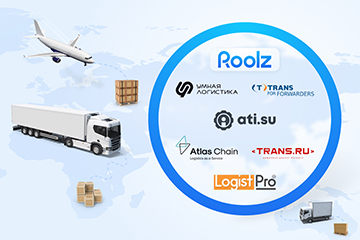
Logistics is the efficient management of the flow of goods from point of origin to the point of consumption. Originally a military science it was the cornerstone of many of the great campaigns of history. It was Frederick the Great (or possibly Napoleon) who said ‘An army marches on it’s stomach’ and great generals from Julius Caesar to Lord Wellington based their success as much on the efficient supply of food and material as on their tactical brilliance. As a science it has, however, relied more on detailed planning than on innovation, calculating the number of chetverik of corn needed to feed an army and its horses to assessing the time required to get that corn from the storage depot to the army in the field.
In civilian life logistics is all about warehousing and transport. The warehouse provides the buffer between the rate of production and the rate of consumption. To most it is just a big shed with stacks of goods. The efficient management of this supply chain was the source of the great wealth of the British and Dutch East India companies and drove the growth of the British Empire. It was in 1953 that innovation really started to impact on the civilian side of logistics when Taiichi Ohno of Toyota studied the movement of goods through supermarkets and applied the same model to manufacturing using Just-in-time and Kanban delivery techniques. This focussed on pulling the goods through the supply chain rather than the push model that had predominated previously. This model came from the manufacturer rather than the logistics providers and many of the developments in the supply chain have been driven by the customers rather than the suppliers of logistics services. Although computers nowadays handle the communications between customers, suppliers and logistics providers (the third and thus 3PL), in the 50’s and 60’s it was all done by hand and one cannot really say that computerisation is an innovation but more an automation of exiting practices.
JIT did, however drive a number of innovations in warehousing. Whether it was the car manufacturer wishing to receive the precise number of components to assemble a specific number of engines today or the supermarket needing to replenish its shelves with fresh goods and avoid over-stocking and goods going out of shelf life, logistics providers had to develop techniques to assemble the diverse array of components or items in the correct numbers in as timely a fashion as possible. This is known as ‘picking’ and a number of techniques are being developed to speed the process and improve response times.
Picking the Order
90% of picking operations are done by hand. Human beings are much more flexible and adaptable than the most advanced robots and automated handling devices. Storage space, particularly in Russia, is very expensive and logistics providers and in-house warehousing operations need to maximise the amount of goods they can store in the warehouse. This results in multilayer storage systems (racking) in building with an internal height of 12-14m. In order to use automated or semi automated picking systems there needs to be clear access above the goods to be selected and this is very expensive space. The downside is that humans make mistakes and the cost of checking and correcting those mistakes is not just in manpower but also in the more important resource of time. Innovation is aimed at reducing the risk of errors and speeding up the manual picking process.
RDT
RDTs (Radio Data Terminals) have been the mainstay of Warehouse Management Systems (WMS) since Motorola launched the RDX1000 in 1978. The original unit had a small screen to display instructions to the picker, a scanner to scan bar codes on the items being picked, a keyboard to confirm actions and a voice channel for subsidiary instructions. The design has actually altered very little over the intervening period because, although electronics have been miniaturised, the human eye and finger are still the original technology. The voice channel has gone but has re-appeared in the latest devices. The RDT is a necessary evil for warehouse operations, it is cumbersome and it requires one hand to hold it another to operate it, which is means it has to be placed somewhere when the goods are manually picked which slows down the whole operation. Recent developments include wrist mounted RDT’s with finger mounted scanners which, although they free the hands for picking are still heavy and can be uncomfortable after a long shift. Recent developments of OLED flexible displays and Samsung’s development of touch screen technology for them could revolutionise the design particular as it will be possible to easily change display and keyboard layout through software and therefore significantly reduce both the size and the weight once more making them the technology of choice.
Voice Picking
Voice Picking (or more correctly Voice Directed Warehousing) has been around since the late 1990’s but it has only really started to develop together with the increasing availability of advance voice recognition systems applied to mobile phones. Instructions are provided to the user through headphones and responses provided through the inbuilt microphone. Instead of scanning each picking location will have a unique random code associated with it. Thus directing voice will point the picker to the location to pick from and the unique code will be read back to confirm that it has been correctly identified. This not only frees the hands of the picker but is lighter and more comfortable to wear for a full shift. The communications channel can also be used for additional communication such as advising the manager of inventory errors.
Pick by Light
Pick by Light systems completely free the picker from the need to carry equipment around and provide an almost fail safe method of ensuring the right goods are picked. Above each picking location is a display with LED readouts and push buttons. These can be of varying complexity but the ideal system has at least a light to show that it is the next location whence to pick, a display of the quantity to be picked, a push button to confirm picking complete and an arrow to show direction to the next location. Increased sophistication includes displaying current inventory in the location, warning on the need to perform an inventory check and even timing displays to pace the picking operation.
Typically, although they are probably the best technology for picking speed and accuracy, Pick by Light systems have largely been limited to small area/high complexity picking operations like electronics, spare parts or pharmaceuticals. The reducing cost of electronic components should allow these type of systems to become mainstream but the market has, up to now, been dominated by systems developers who make there money on the software rather than the hardware. There is definitely an opportunity for the development of a low cost generic system.
But then it goes wrong!
While these and either picking guidance systems tell you where to go and what to pick they don’t actually help you to select the correct quantity. This is not a real issue if the order is for one or two items. If however you have to pick 127 mobile phones from a pallet of 720 there a lots of opportunities for error, especially when you are working in an aisle with noise, traffic and other distractions. Warehouse operators have traditionally relied on ‘backward control’ to highlight errors in the picking process, rechecking all the goods in an order, remaining stock counts when the picking directing device indicates the number that should remain in a location after picking is complete and demanding that the quantity is checked on every fifth, say, pick operation and cycle counting when the stock of any item (SKU - Stock Keeping Unit) is 100% checked at given intervals based on the value and the demand of said item.
The development of RFID (Radio Frequency Identification) tags has provided the opportunity for real time inventory control in warehouses, especially for high value goods. RFID tags are the square stickers with a metallic maze like pattern printed on them. They can be interrogated by a system of aerials located at strategic positions within the warehouse. As each RFID tag is unique and the aerials not only identify the item but also its location it is, in theory, possible to ‘count’ the goods in each location before and after picking and immediately highlight any errors. The cost of such an installation is not insignificant but the increasing use of RFID tags as standard in retail means that it is worthwhile for high value goods.
Storing and Replenishing
Building and maintaining warehouses in Russia is very expensive. Typically costs are some four times greater than those in Finland and as much as eight times more than the USA. It therefore becomes very important to maximise the amount of goods that can be stored in a given space. Unfortunately the speed of movement around the warehouse for MHE (Mechanical Handling Equipment) is inversely proportional to the density of storage. This is due to the tighter turns and more accurate steering required as the gap between storage racks reduces. The highest storage density is achieved in ‘High Bay’ warehouses which can be up to 40 metres tall where all movements are handled by computer controlled cranes (although manual control is possible). This type of warehouse is custom built and rather than outing up the building and installing the racking, the racking is built first and then the walls are attached directly to it. Each aisle has its own crane so the cost of these warehouses is very high. Typically they are only affordable by manufacturers who can amortise the investment over a long period and for whom the depreciation is a low proportion of the earnings. Commercial warehouse operators will generally use APR (adjustable pallet racking) which is the most flexible and can be used for any client. These systems have typical storage density of 1.2 m3 of goods per m2 of floor space. For higher storage densities Narrow Aisle or Very Narrow Aisle racking is used where densities of 1.7 can be achieved. Other types of storage are Drive-in/Drive Through which is suitable for high volumes of a single item (1.4 m3/m2) and double deep (1.3) where two pallets are stored in each location. The productivity of any of these non automated storage systems and dependent on two major factors – the distance travelled and the skill of the driver.
Route Optimisation
In theory it is quite simple to ensure that the routes taken by Fork Lift Trucks in a warehouse are optimised to minimize the travelling distance, in practice it is very difficult. Just like the route you plotted prior to your car journey may be free of jams beforehand incidents can occur that mean the journey takes much longer than planned and the same can happen in a warehouse. The presence of a number of drivers operating in the same confined space means it is almost impossible to predict the shortest route in advance. Innovations have largely focused on avoiding two vehicles attempting to occupy the same space at the same time or providing real time tracking and route guidance on the fly such as the Sky-Trax system.
The Human Factor
A problem, possibly unique to Russia, is the rapid growth in warehousing and therefore the increasing demand for skilled drivers. Driving speed is not just dependent on the skill of the driver but also on his awareness of the activities around him. This takes at least 2 years to develop but the shortage of drivers means that there is very free movement of labour and very rarely does a driver spend sufficient time as a member of a team to allow them to develop fully. Typically this means that driving speeds can be 50% lower than one would normally see in a warehouse with long service staff.
These areas are probably a major opportunity for innovation. It is anticipated that the first driverless cars will be on the market in 2015 with limited capabilities with the expectation of fully automated systems by 2018. Logically driverless Fork Lift Trucks should be much less of a challenge as their systems are relatively simple and most are already electronically controlled (Drive by Wire). Semi-driverless tractors are becoming the norm in large scale agricultural operations and the autopilot has been around for decades. A number of manufacturers have developed fully driverless horizontal pallet movers but the challenge remains to automate the vertical operations.
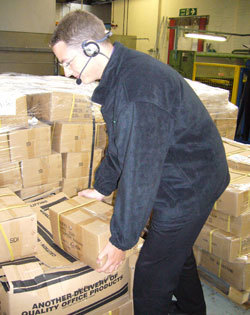
Voice picking
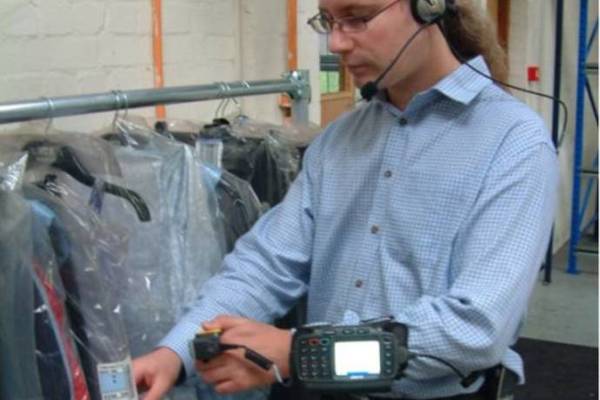
Voice picking and wrist mounted RDT
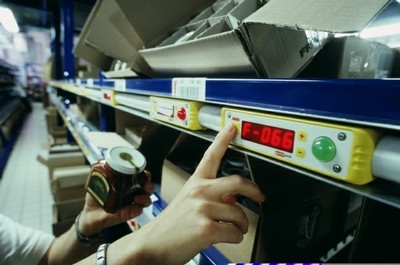
Pick by Light
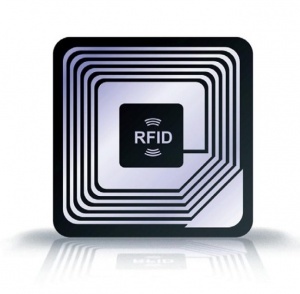
RFID Tag
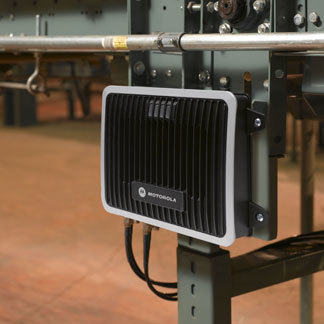
RFID Antenna
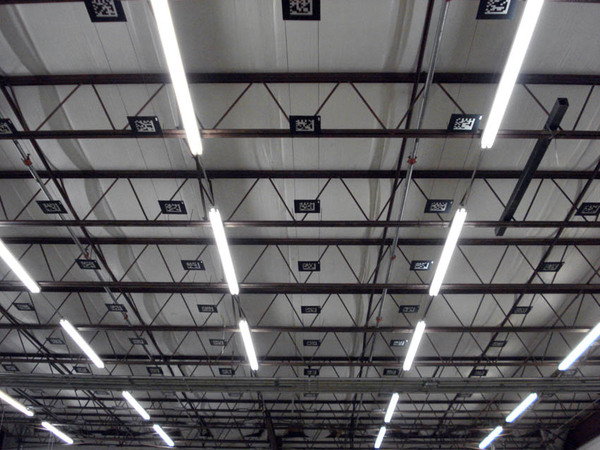
Sky-trax Sensors
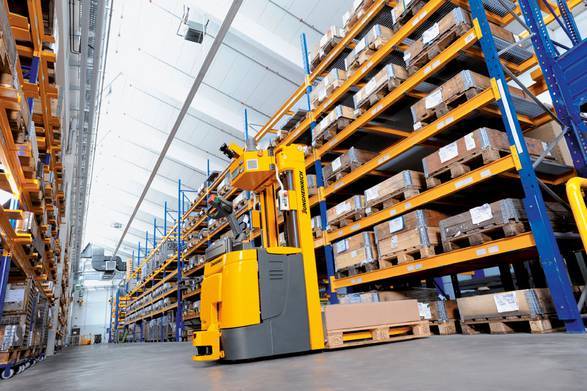
Jungheinrich ERC APM driverless transport system
Hugh Edwards, Warehouse Operations Development Director, TABLOGIX

